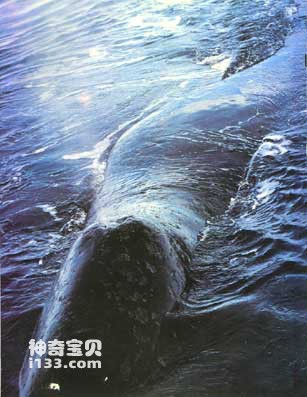Whaling is the core of Eskimo culture. The history of the Eskimos is inseparable from whaling. In other words, they rely on whales in Arctic waters to survive. What the Eskimos call whaling mainly refers to the bowhead whale, the Arctic right whale. The body of the Arctic right whale is spindle-shaped, with a large head that can account for more than 1/4 of the body length; the baleen is long and thin, highly elastic, and the neck is not obvious. The average length of adult right whales is 15 to 18 meters, and older whales can reach 21 meters. Whenever a right whale floats to the surface, almost half of its back is exposed above the water, and its back is wide, hence its name. In addition, right whales have a unique sign-the water jet they emit is double-stranded, while other whales are single-stranded.
Arctic right whales sometimes feed alone, sometimes in groups. Whenever they are feeding, they swim slowly and leisurely on the sea while calmly sticking their heads out of the water and opening their mouths wide. Its lower jaw can droop at different angles, sometimes forming an angle of 60 degrees with the upper jaw. The number of right whales in each group ranges from two to more than 10. When feeding, they will automatically form an echelon. This echelon is very similar to the formation of wild geese when flying. Each whale follows the one in front and starts from there. The sides are offset by half to three body lengths. Sometimes, when some Arctic right whales in the echelon leave, others will automatically join the echelon, keeping their formation basically unchanged. This formation can last for several days. At this time, a large amount of water flow and The fish and shrimp will enter the wide open mouth. Feeding in groups allows Arctic right whales to hunt food they cannot otherwise hunt.

animal tags:
We created this article in conjunction with AI technology, then made sure it was fact-checked and edited by a Animals Top editor.